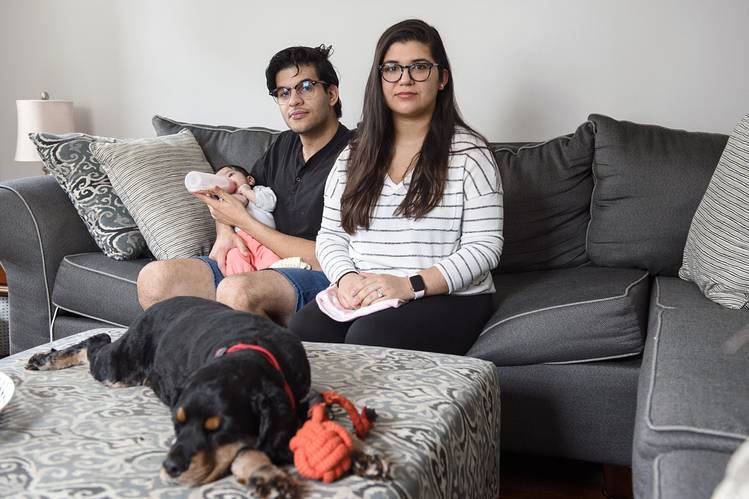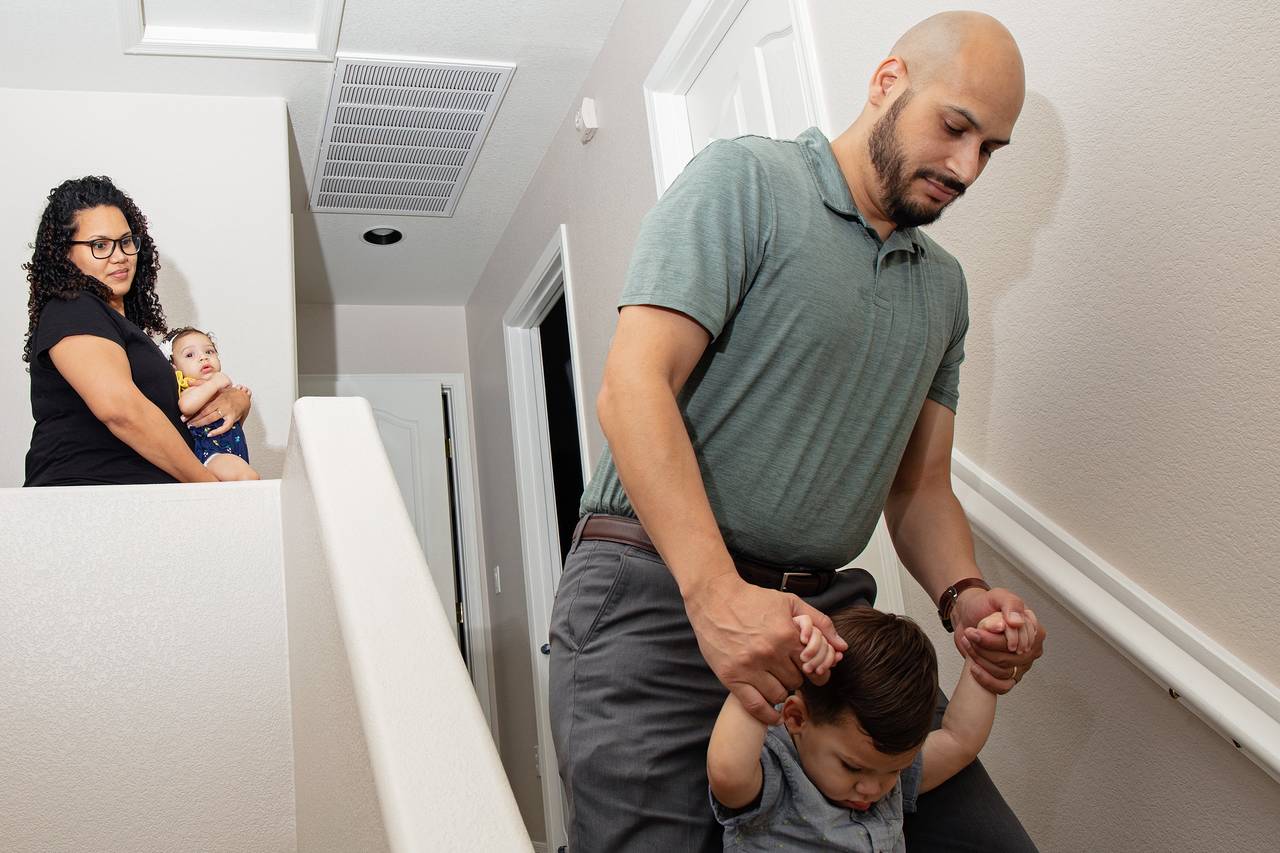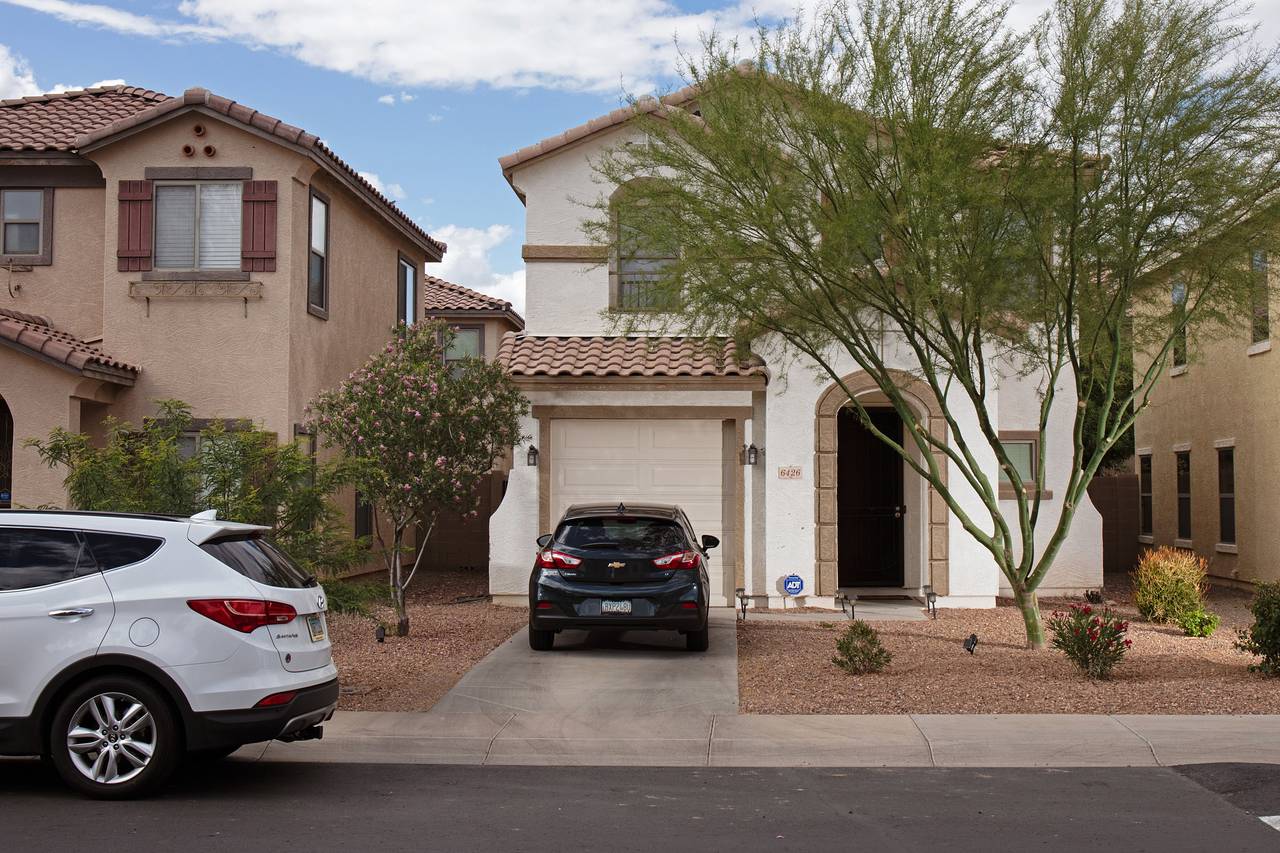The American middle class is
falling deeper into debt to maintain a middle-class lifestyle.
Cars, college, houses and medical care have become steadily more costly, but
incomes have been largely stagnant for two decades, despite a recent uptick. Filling the gap between earning and spending is an explosion of finance into nearly every corner of the consumer economy.
Consumer debt, not counting mortgages, has climbed to $4 trillion—higher than it has ever been even after adjusting for inflation. Mortgage debt slid after the financial crisis a decade ago but is rebounding.
Student debt totaled about $1.5 trillion last year, exceeding all other forms of consumer debt except mortgages.
Auto debt is up nearly 40% adjusting for inflation in the last decade to $1.3 trillion. And the average loan for new cars is up an inflation-adjusted 11% in a decade, to $32,187, according to an analysis of data from credit-reporting firm Experian.
Unsecured personal loans are back in vogue, the result of competition between technology-savvy lenders and big banks for borrowers and loan volume.
The debt surge is partly by design, a byproduct of low borrowing costs the Federal Reserve engineered after the financial crisis to get the economy moving. It has reshaped both borrowers and lenders. Consumers increasingly need it, companies increasingly can’t sell their goods without it, and the economy, which counts on consumer spending for more than two-thirds of GDP, would struggle without a plentiful supply of credit.
Changing Portfolio
Mortgage balances have accounted for more than two-thirds of U.S. household debt since 2003 but other balances such as auto loans have been growing quickly in recent years. Nonhousing consumer debt surged by $1 trillion in real terms between 2013 and 2019 while housing debt increased by just half that.
But the debt pile is also an accumulated ledger of economic risk. It should be manageable so long as unemployment remains low. If job losses begin to rise, it would become unsustainable for some share of borrowers, raising chances of an increase in missed payments and lenders writing off unpaid balances.
The Fed lowered interest rates on Wednesdaybecause it sees rising risks of a slowdown that could boost unemployment.
Median household income in the U.S. was $61,372 at the end of 2017, according to the Census Bureau. When inflation is taken into account, that is just above the 1999 level. Without adjusting for inflation, over the three decades through 2017, incomes are up 135%.
Average tuition at public four-year colleges, however, went up 549%, not adjusted for inflation, according to data from the College Board. On the same basis, average per capita personal health-care expenditures rose about 276% over a slightly shorter period, 1990 to 2017, according to data from the Centers for Medicare and Medicaid Services.
And average housing prices swelled 188% over those three decades, according to the S&P CoreLogic Case-Shiller National Home Price Index.
“The costs of staying in the middle class are going up,” said Adam Levitin, a Georgetown Law professor who studies bankruptcy, financial regulation and consumer finance.
Jonathan Guzman and Mayra Finol earn about $130,000 a year, combined, in technology jobs. Though that is more than double the median, debt from their years at St. John’s University in New York has been hard to overcome.
The two 28-year-olds in West Hartford, Conn., have about $51,000 in student debt, plus $18,000 in auto loans and $50,000 across eight credit cards. Adding financial pressure are a baby daughter and a mortgage of around $270,000.
“I’m normally a worrier, but this is next-level stuff. I’ve never been more stressed,” Mr. Guzman said. “Never would I have thought with the amount we make I would have these problems.”
They no longer dine out several times a week. Other hits to their budget were hard to avoid, such as a wrecked car that forced them to borrow more.
Mr. Guzman and Ms. Finol at home in West Hartford, Conn., with their baby daughter. PHOTO:MONICA JORGE FOR THE WALL STREET JOURNAL
Ms. Finol hasn’t used her T.J. Maxx credit card in more than a year. She makes the minimum monthly payment on its balance of approximately $7,500. Her monthly statement says if she continues at this pace, she will need about 23 years to pay it off.
Earlier this year, Mr. Guzman put his credit cards in a Ziploc bag with water and placed it in the freezer. In May, however, they went to two weddings, and needed a card to cover the cost of a gift and a rental car.
Mr. Guzman removed one of the credit cards from the freezer. “A lot of things came at once,” he said. Since then, he’s taken the rest of them out, too.
U.S. households that have credit-card debt owed an average of $8,390 in the first quarter 2019, up 9% from 2015 when adjusted for inflation, according to an analysis of Federal Reserve data by research firm WalletHub.com.
Assets and debt by income group in
2018
The wealthiest 10% of Americans have nearly double the assets of everyone else.
New wealth gap
Taking on a mortgage to buy a house that could appreciate, or borrowing for a college degree that should boost earning power, can be wise decisions. Borrowing for everyday consumption or for assets such as cars that lose value makes it harder to save and invest in stocks and real estate that tend to create wealth. So the rise in consumer borrowing exacerbates the wealth gap.
SHARE YOUR THOUGHTS
What’s the best solution to stagnating middle-class incomes? Join the conversation below.
The U.S. economy roughly doubled in size from 1989 through 2016, data from the U.S. Bureau of Economic Analysis show. Counted together, everyone got wealthier. But gains in assets owned were heavily skewed toward the highest earners, according to a Journal analysis of the Fed’s Survey of Consumer Finances.
The median net worth of households in the middle 20% of income rose 4% in inflation-adjusted terms to $81,900 between 1989 and 2016, the latest available data. For households in the top 20%, median net worth more than doubled to $811,860. And for the top 1%, the increase was 178% to $11,206,000.
Put differently, the value of assets for all U.S. households increased from 1989 through 2016 by an inflation-adjusted $58 trillion. A third of the gain—$19 trillion—went to the wealthiest 1%, according to a Journal analysis of Fed data.
“On the surface things look pretty good, but if you dig a little deeper you see different subpopulations are not performing as well,” said Cris deRitis, deputy chief economist at Moody’s Analytics.
Counting all kinds of debt, including mortgages, consumers aren’t nearly as debt-burdened as they once were. In the fourth quarter of 2007, the last year before the financial crisis struck, households devoted 13.2% of their disposable income to debt service. In the first quarter of 2019, that number was 9.9%, largely due to low interest rates.
Partly because of widespread refinancing, mortgage payments since the start of 2017 have claimed the smallest slice of disposable personal income in decades, in the low 4% range, according to Fed data.
Debt among U.S. households increased by nearly $9 trillion between 1989 and 2018, and 74% of that was issued to the bottom 90% of households by net worth. A majority of the growth in assets went to the top 10% of households.
Quarterly contribution to overall growth in assets and debt, by wealth group
Bottom 90%
Other debt, such as auto and student loans and credit-card borrowing, consumed about 5.7% of disposable personal income in the first quarter. That was up from a low of 4.9% at the end of 2012 and back to 2009 levels. In contrast to a mortgage, most of this borrowing went to fund consumption.
Elizabeth and Andy Bauerle have been trying to buy a house for seven years without success, despite having combined income of about $155,000—in the top 20% of households, according to census data.
The two 34-year-olds face a common conundrum. Their jobs are in the Seattle metro area. In cities with strong job and wage growth, such as theirs, rising real-estate prices can put homeownership out of reach even for families that rate as well-off by overall national standards.
The Bauerles have $30,000 in their down-payment fund, but the kind of house they want—a two-bedroom, two-bath with a yard—starts at around $600,000 in and around Seattle.
They figure they would need to make a down payment of $70,000 to keep the mortgage payment manageable, given their other obligations. These include student-loan debt of about $88,000 that consumes around $1,000 of income every month.
Ms. Bauerle said about half of their take-home pay goes out the door for that plus $1,750 in rent and $1,200 in child care for their son. “Four thousand dollars of our income is immediately spoken for,” she said.
Like many families, they have stretched out the monthly payments on an auto loan. They have a 2013 Subaru, bought used three years ago. They won’t write the last $240 monthly check on the car until it is about nine years old.
Families such as the Bauerles who want to live in solid middle-class neighborhoods with good schools and reasonable commutes are increasingly renting single-family homes. Taking advantage of this trend, the private-equity firm
Blackstone Group Inc., with other investors, launched a business that is now the nation’s largest renter of single-family houses.
The Bauerle family at home in Shoreline, Wash.PHOTO: IAN BATES FOR THE WALL STREET JOURNAL
The number of households that have inflation-adjusted annual incomes of $100,000 or greater but are renters nearly doubled from 2006 to 2016, according to the Joint Center for Housing Studies of Harvard University.
Domonic Purviance, a senior financial specialist at the Federal Reserve Bank of Atlanta, said people earning the median income can no longer afford the median-priced new home, costing $323,000 last year, and barely have the means to buy the median existing home, which now about $278,000.
“That’s a radical shift in the structure of the market,” Mr. Purviance said. “What we may have to prepare for in the future is that buying a new home, and in some markets even buying an existing home, may become a luxury.”
The squeeze is likely even tighter because his affordability calculation doesn’t take into account buyers’ other debts and it assumes a 20% down payment. Home buyers’ median down payment in the third quarter last year was only 7.6%, according to Attom Data Solutions.
Nowhere is the struggle to maintain a middle-class lifestyle more apparent than in cars. The average new-car price in the U.S. was $37,285 in June, according to Kelley Blue Book. It didn’t deter buyers. The industry sold or leased at least 17 million cars each year from 2015 to 2018, its best four-year stretch ever. Partly because of demand satisfied by that run, sales
are projected to be off modestly this year.
How households earning $61,000 can acquire cars costing half their gross income is a story of the financialization of the economy. Some 85% of new cars in the first quarter of this year were financed, including leases, according to Experian. That is up from 76% in the first quarter of 2009.
Car trouble
And 32% of new-car loans were for six to seven years. A decade ago, only 12% were that long. The shorter-term loans of the past gave many owners several years of driving without car payments.
Now, a third of new car buyers roll debt from their old loans into a new one. That’s up from roughly 25% in the years before the financial crisis. The average amount rolled into the new loan is just over $5,000, according to Edmunds, an auto-industry research firm.
Leasing, which often entails lower payments than purchase loans, accounted for 34% of financed new vehicles in the first quarter, up from 20% a decade earlier, according to Experian. Drivers of used cars also finance them—more than half did last year.
One of the last stops for strapped consumers is personal loans, which often offer lower interest rates than credit cards and usually offer fixed monthly payments with a set end date. Banks pulled out of the sector after losses during the financial crisis, but solid recent returns
have drawn in financial-technology startups. And many big banks, including
Goldman Sachs GroupInc.,
Citigroup Inc., and
SunTrust BanksInc., are in the business.
The unsecured loans are often pitched to consolidate credit-card debt as well as for home renovations, vacations and unexpected expenses. Personal-loan balances totaled a record $138 billion at the end of last year, vs. $46 billion at the end of 2011, according to credit-reporting firm
TransUnion .
The partial federal-government shutdown that ended in January exposed the vulnerability of many consumers.
Discover Financial Services said thousands of government workers told it they were unable to make the minimum payments on their credit cards and the monthly payments they owed on personal loans and private student loans.
Discover waived fees, allowed customers to skip a payment and held off on reporting missed payments to credit-reporting firms.
In case of a broad economic downturn, these people’s debt levels could weigh on the economy for an extended period, because people who carry a lot of debt into a downturn tend to rein in their spending for years afterward.
Angelo and Noelle Young with their children in front of their Laveen, Ariz., home. PHOTO: CASSIDY ARAIZA FOR THE WALL STREET JOURNAL
Angelo and Noelle Young of Laveen, Ariz., are going through their own economic downturn. The two-child couple earned just over $100,000 until 2017. They had a roughly $106,000 mortgage, about $97,000 in student-loan debt and $24,000 in car loans.
Then Ms. Young, 33, moved from a full-time to a part-time faculty position at a university because of its budget cuts. With income reduced to around $70,000, they still felt confident enough in their earning power to borrow $48,000 to finance two cars in 2017.
They rolled $13,000 of loan balances after trade-ins into loans for two modestly priced vehicles: a 2014 Hyundai Santa Fe and a new Chevrolet Cruze. The $1,070 monthly car payments were manageable until Mr. Young, 40, left his job working for the city after incurring several pay cuts.
“We both had solid situations,” Ms. Young said. Then “mine became the dicey one and then we both got into dicey situations.”
After another job didn’t work out, Mr. Young switched to selling real estate and driving for Uber and Lyft. The family’s income slipped to $58,000.
The Youngs at their home, left, and their home in Laveen, Ariz. PHOTO: CASSIDY ARAIZA FOR THE WALL STREET JOUNAL
Mr. Young cashed out $8,000 from a pension to pay off a credit-card balance racked up last year. The two have been able to postpone student-loan payments, citing financial hardship and Ms. Young’s Ph.D. studies.The Youngs have cut back on gym memberships, stopped buying organic groceries and canceled cable TV. Ms. Young was recently hired as an adjunct professor at another university beginning this fall.
Growing up, Mr. Young says, he was taught to work hard to get a nice house and a reliable vehicle. Now he realizes how easily borrowing too much can undermine this plan.
“Things we were taught could be assets aren’t really assets,” he said. “They’re liabilities.”
Corrections & Amplifications
Unadjusted for inflation, home prices rose 188% from 1987 to 2017, average tuition at public four-year colleges rose 549% and health-care expenditures rose 276% from 1990 to 2017. An earlier version of this article and an accompanying chart, based on incorrect inflation-adjusted data provided by Adam Levitin, a Georgetown Law professor, said home prices rose 290%, tuition rose 311% and health-care expenses rose 51%. The corrected data is in nominal terms, to avoid statistical issues tied to inflation adjustment. Meanwhile, household income from 1987 to 2017, not adjusted for inflation, rose 135%. The earlier article mentioned only the number adjusted for inflation. (Aug. 2, 2019)




